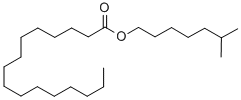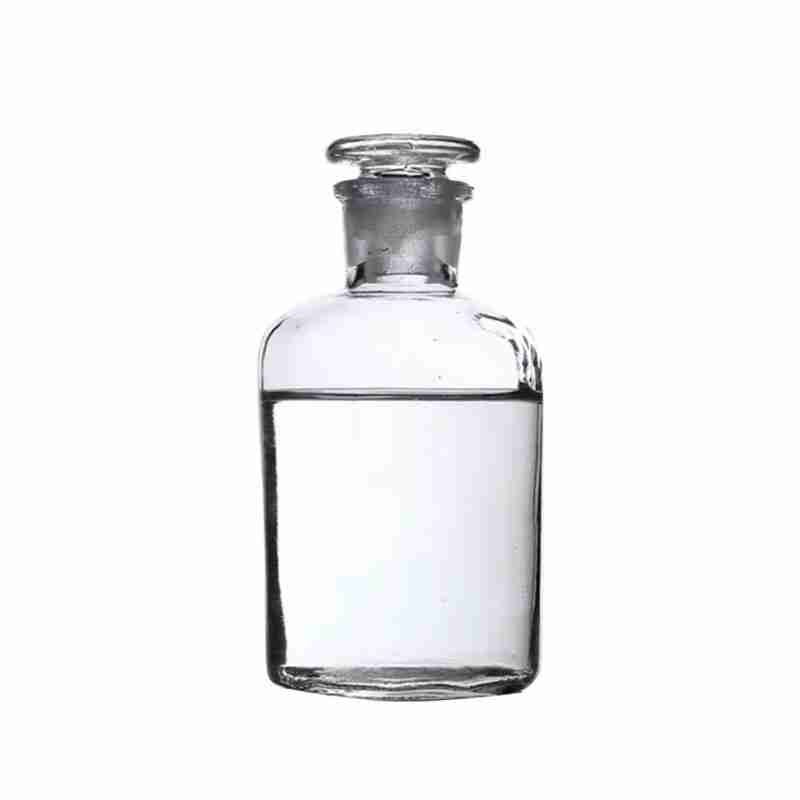Isooctyl palmitate CAS #1341-38-4
Isooctyl palmitate, also known as isooctyl palmitate, has the CAS number of 1341-38-4. It is a colorless to slightly yellow transparent oily liquid with the following properties and uses:
Properties: Good chemical and thermal stability, insoluble in water, soluble in conventional organic solvents and oils used in the cosmetics industry;
Uses: It is a widely used fine chemical product, commonly used in various human skin care products, and is an excellent skin softener. It has stable performance, is not easy to oxidize or produce odor, can make the skin soft and smooth without greasy feeling, has good permeability, and can be used as a good solvent for pigments in lipstick and mascara. It is often used in the formulation of skin cream, foundation cream, hair oil, eye shadow, lipstick, mascara, etc. It can also be used as a plasticizer for ethyl cellulose, nitrocellulose and polystyrene, and can also be used as an auxiliary plasticizer for polyvinyl chloride.
发送询盘
Isooctyl palmitate CAS #1341-38-4
| Isooctyl palmitate Basic information |
| Product Name: | Isooctyl palmitate |
| Synonyms: | ISOOCTYL PALMITATE;Palmitic acid, 6-methylheptyl ester;Palmitic acid 2-ethylhexyl ester;6-methylheptyl hexadecanoate;Isooctyl palmitate ISO 9001??2015 REACH;Isooctyl Palmitate 2-Ehp;High Quality CAS 1341-38-4 2-Ethylhexyl Palmitate with Best Price;Isooctyl hexadecanoate |
| CAS: | 1341-38-4 |
| MF: | C24H48O2 |
| MW: | 368.64 |
| EINECS: | 215-675-9 |
| Product Categories: | Cosmetics;bc0001 |
| Mol File: | 1341-38-4.mol |
 |
|
| Isooctyl palmitate Chemical Properties |
| Boiling point | 394.5-398.6?? at 102.15kPa |
| density | 0.855g/cm3 at 20?? |
| vapor pressure | 0.016Pa at 20?? |
| storage temp. | Sealed in dry,Room Temperature |
| form | Liquid |
| LogP | 3.763 at 25?? and pH5.97 |
| CAS DataBase Reference | 1341-38-4(CAS DataBase Reference) |
| Safety Information |
| MSDS Information |
| Isooctyl palmitate Usage And Synthesis |
| Chemical Properties | Clear liquid.Soluble in most organic solvents. Combustible. |
| Uses | Secondary plasticizer for synthetic resins, extrusion aid and plasticizer. |
- 2
- 2-diallylpent-4-en-1-amine
- 4
- 95-16-9
- Ammonium sulfamate
- Benzothiazole
- cas:67889-00-3ح2
- cas:83524-75-8 | pigment black 32
- cas:928836-00-4 | 2
- cas:932745-70-5 | 4
- Chemical Minerals
- Coconut diethanolamide
- Daily Chemicals
- discount
- for sale
- General pvc resin
- hexyl D-glucoside
- in stock
- Lauramidopropyl betaine
- LAURIC ACID MONOETHANOLAMIDE
- Petroleum Additives
- Plasticiser
- Ploymers
- price
- PVC
- quotation
- Raw Materal
- Remove term: Petroleum Additives Petroleum Additive
- SODIUM ETHYL 2-SULFOLAURATE
Related Products
Polyhexamethylene guanidine hydrochloride, often abbreviated as PHMG-HCl, is a high molecular weight polymeric biguanide compound known for its potent antimicrobial properties. With a chemical structure that features a long chain of methylene groups bridged by guanidine units, PHMG-HCl is effective against a broad spectrum of microorganisms, including bacteria, viruses, and fungi.
This hydrochloride salt form of PHMG is highly soluble in water and is commonly used in various applications due to its non-irritant and non-toxic nature to human skin and mucous membranes. It is widely recognized for its ability to form a colorless and odorless solution, making it an ideal choice for use in personal care products, medical disinfectants, and water treatment processes.
The versatility of PHMG-HCl lies in its cationic nature, which allows it to bind to negatively charged microbial cell walls, disrupting their integrity and leading to cell death. This mechanism of action contributes to its effectiveness as a preservative and disinfectant. Moreover, its substantivity, or the ability to adhere to surfaces, enhances its long-lasting antimicrobial activity.
In summary, Polyhexamethylene guanidine hydrochloride is a reliable and efficient antimicrobial agent, pivotal in industries where hygiene and cleanliness are paramount, offering a safe and sustainable solution for microbial control.
Chemical Name: o-Xylene
Synonyms: 1,2-Dimethylbenzene; ortho-xylene
CAS No.: 95-47-6
Molecular Formula: C8H10
Molecular Weight: 106.17
Chemical Name: Choline salicylate
CAS No.: 2016-36-6
Molecular Formula: C12H19NO4
Molecular Weight: 241.28
Appearance: Red-Brown Crystal
Chemical Name: 3-Hydroxybutyric acid
CAS No.: 625-71-8
Molecular Formula: C4H8O3
Molecular Weight: 104.1
Appearance: White powder
3,4-Ethylenedioxythiophene is a synthetic organic compound characterized by its unique structure that includes a thiophene ring with ethylenedioxy substituents at the 3 and 4 positions. This compound is known for its potential applications in the synthesis of various organic materials, including pharmaceuticals and organic electronic devices such as sensors and solar cells. Its stability and reactivity make it a versatile intermediate in the chemical industry.
Chemical Name: UV-120
Other Name: (2’,4’-Di-tert-butylphenyl 3,5-di-tert-butyl-4-hydroxybenzoate)
CAS No.: 4221-80-1
Molecular Fomula: C29H42O3
Molecular weight: 438.66
Assay: ≥99%(LC)
Chemical Name: Ammonium Iron(II) Sulfate
Synonyms: Diammonium iron bis(sulphate); iron (ii) ammonium sulfate
CAS No.: 10045-89-3
Molecular Formula: FeH5NO4S
Molecular Weight: 170.95
Chemical Name: Zinc citrate
Synonyms: Zinc citrate trihydrate
CAS No.: 546-46-3
Molecular Formula: C6H8O7Zn
Molecular Weight: 257.5
Appearance: White powder
Chemical Name: Ashwagandha Extract
Synonyms: Withania somnifera, ext.; Withania Somnefera Extract
CAS: 90147-43-6
Appearance: Brown
Chemical Name: Dehydrocholic acid
Synonyms: Acide dehydrocholique; Triketocholanic acid
CAS No.: 81-23-2
Molecular Formula: C24H34O5
Molecular Weight: 402.53
Appearance: Powder
POLY(VINYL CHLORIDE-CO-ISOBUTYL VINYL ETHER) is a copolymer that combines the properties of vinyl chloride and isobutyl vinyl ether. This polymer offers a balance of rigidity and flexibility, along with enhanced chemical resistance and durability. It is commonly used in the production of films, coatings, and adhesives due to its excellent barrier properties against gases and moisture, making it ideal for packaging and construction applications.
Butylated Hydroxytoluene (BHT) is a synthetic phenolic antioxidant commonly added to foods, cosmetics, and packaging to prevent the oxidation of fats and oils, thereby extending their shelf life. It is also used as a preservative in a variety of products, including rubber, petroleum products, and animal feed. BHT is recognized for its effectiveness in maintaining nutrient levels, color, flavor, and odor in food products . It is known to have a melting point of 69-71??C, a boiling point of 265??C, and is soluble in ethanol, acetone, and benzene, but not in water, glycerin, or propylene glycol . BHT is also used in some dietary supplements due to its antioxidant properties . However, it is important to handle BHT with care, as it can cause skin irritation and is considered harmful if swallowed .


















